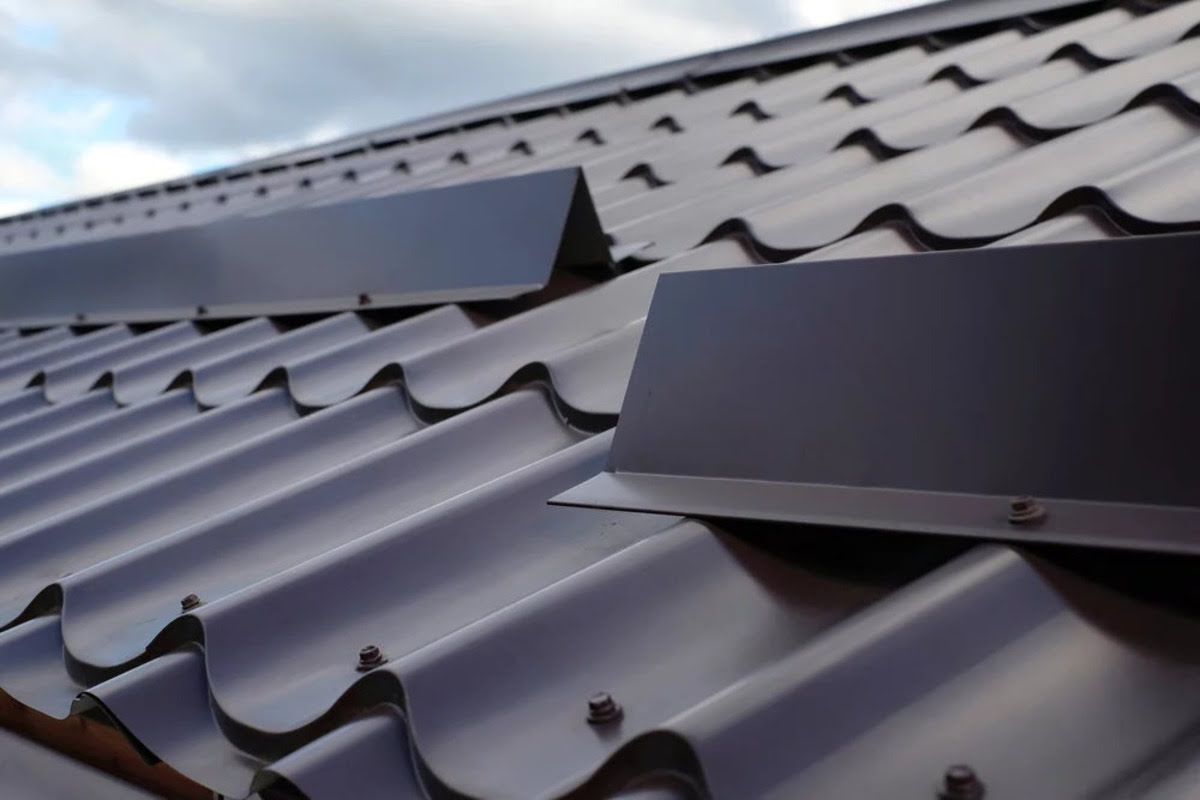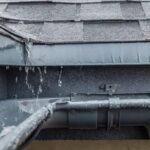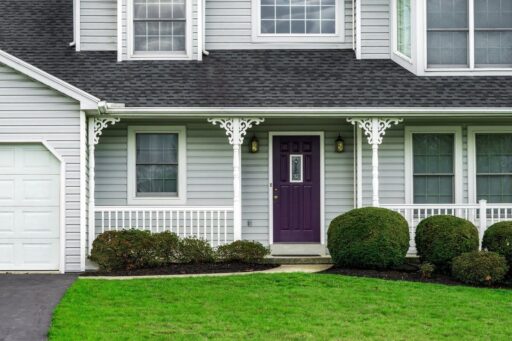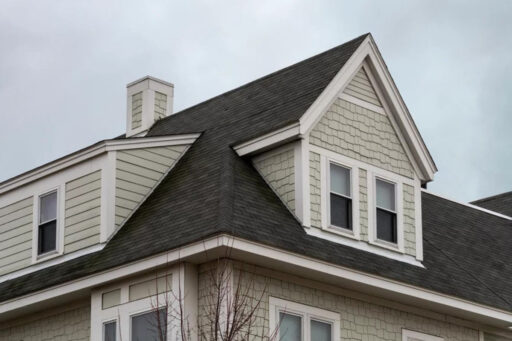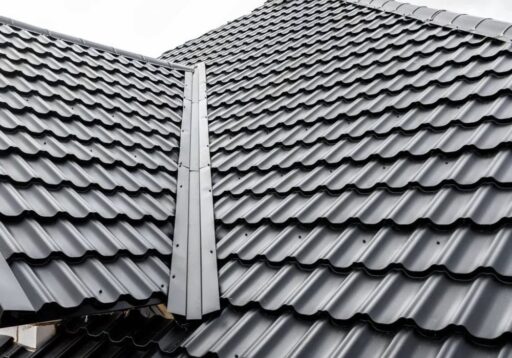Snow bars for metal roofs are not just an optional accessory for Vancouver homeowners—they’re an essential safety feature that prevents dangerous snow avalanches from your rooftop during winter months. When snow accumulates on smooth metal surfaces, it creates perfect conditions for sudden, unexpected slides that can damage property, injure passersby, or create hazardous conditions around your home. Fortunately, snow guards for metal roofs provide a simple yet effective solution to this potentially serious problem.
What Are Snow Guards and Why Do They Matter?
Understanding snow retention systems begins with knowing exactly what these devices do. Snow guards for metal roofs are specialized fixtures installed on roofs to prevent large masses of snow and ice from suddenly sliding off in dangerous avalanches. These simple yet effective devices hold snow in place, allowing it to melt gradually instead of falling all at once.
Metal roofs create ideal conditions for sudden snow slides due to their slick surface. Unlike textured shingles, the smooth finish makes snow slide off easily, especially as temperatures fluctuate. When snowfall accumulates, it bonds to the roof and to itself at the ridge. As sunshine returns, infrared rays warm the metal beneath the snow, creating a thin layer of meltwater that reduces friction. Once the snow’s weight overcomes those bonds, a sudden release occurs — essentially a rooftop avalanche.
In cities like Vancouver, rooftop avalanches pose serious threats. Each year, sudden snow releases cause property damage, injuries, and even fatalities. Dangers include:
- Crushing damage to vehicles and landscaping
- Injuries to pedestrians, children, and pets
- Destruction of gutters, skylights, and roof components
- Potential liability from injuries or property damage
These risks are especially high where buildings are close together and sidewalks run directly beneath roof eaves. In Toronto and other urban centres, damage and injuries from falling snow are common during warmups and spring thaws.
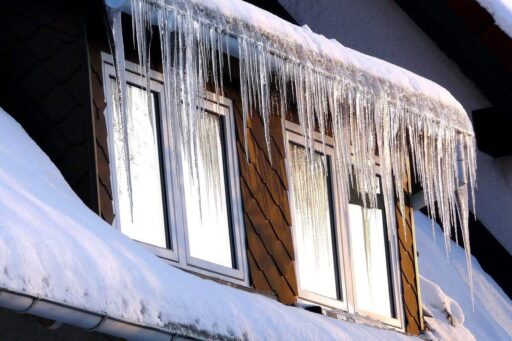
The risk of snow slides in urban areas
In urban settings like Vancouver, these rooftop avalanches pose serious threats. Each year, sudden snow releases cause millions in property damage, personal injuries, and occasionally even fatalities. The dangers include:
- Crushing damage to vehicles, landscaping, and lower roof sections
- Injuries to pedestrians, children, and pets walking below
- Destruction of gutters, skylights, and other roof components
- Potential lawsuits from injured parties or property damage
These risks are magnified in city environments where buildings stand close together and pedestrian areas often sit directly beneath roof eaves. In Toronto and similar urban centres, injuries and property damage from falling ice and snow occur regularly, especially during unseasonable warmups and spring thaws.
Why snow guards are essential in winter climates
For homeowners in winter climates, snow guards aren’t just accessories—they’re necessities. These devices distribute snow load more evenly across the roof surface, preventing stress concentration that could lead to structural damage. Moreover, they create a mechanical resistance interface that allows snow to evacuate through natural melting processes instead of dangerous slides.
Snow guards provide multiple critical benefits:
- Protection of people and property – They prevent dangerous avalanches that could injure pedestrians or damage vehicles and landscaping below
- Structural protection – By distributing snow weight evenly, they reduce the risk of roof damage or collapse
- Prevention of ice dams – They help manage melting patterns, reducing the risk of destructive ice formation
- Legal protection – They reduce liability risks for property owners by mitigating predictable safety hazards
- Investment protection – They help extend roof lifespan by reducing stress from uneven snow loads
The scientific consensus is clear—in areas receiving any significant snowfall, snow guards represent an essential safety system for metal roofs, not an optional upgrade. Since metal roofs have slicker surfaces than other roofing materials, snow retention becomes especially critical for preventing dangerous slides as winter temperatures fluctuate.
Types of Snow Guards for Metal Roofs
When selecting the right snow retention solution for your metal roof, first understand the major categories available. Each system offers unique benefits depending on your specific needs, roof configuration, and local snow conditions.
Bar-Style Snow Guards
Bar-style snow guards use continuous horizontal bars along the roof’s eaves to create a barrier against snow slides. Systems like ColorGard® blend with roofing by inserting a matching strip of material into the channel for a clean appearance.
These guards are valued for their modern look and often require only one row for typical applications, though steeper roofs or heavy snow loads may need multiple rows. They attach either by clamping to standing seams or fastening with brackets. Bar-style systems start at about $3.60 per linear foot, making them a cost-effective option.
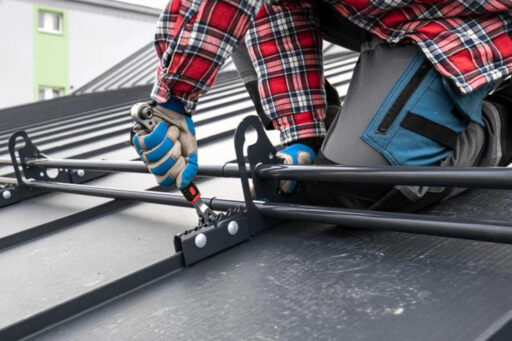
Pad-Style Snow Guards
Pad-style guards are individual units arranged in staggered patterns across the roof. Small-profile pads (under 4 sq. in.) work mainly through friction and require denser placement near edges. Large-profile pads (over 4 sq. in.), such as Polar Blox, act more like barriers, similar to fences.
These guards are the most economical option but have drawbacks. Adhesive-mounted pads can loosen over time, while mechanically fastened pads create roof penetrations that may increase the risk of leaks.
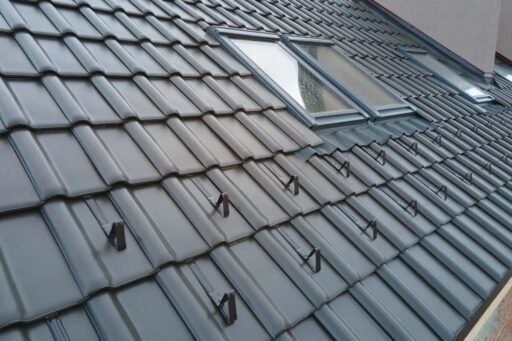
Fence-Style and Rail Systems
Fence-style snow guards use two or more vertical tubes, resembling a split rail fence. They’re ideal for heavy snow loads or steep roofs, with systems like SnoFence™ or X-Gard™ starting around $11 per linear foot. Lighter options such as SnoRail™ offer a sleek single-rod design for medium-duty use, while two-rail setups provide stronger stopping power. These systems, often made from aluminum or brass, combine strength with an aesthetic suited for custom homes.
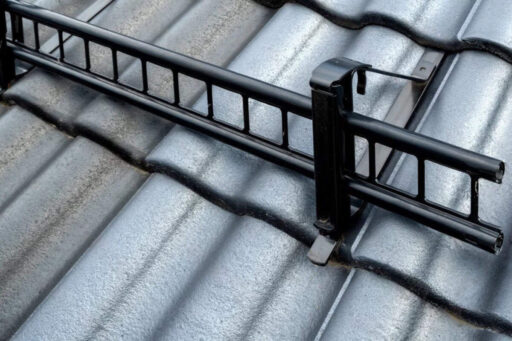
Clamp-On vs. Screw-On Models
Attachment methods are as important as the guard type. Clamp-on models grip standing seams without penetrating the roof, preserving warranties and allowing thermal movement. Screw-on systems anchor directly to the structure but require careful weatherproofing and may void warranties. Adhesive-mounted guards are easier to install but far weaker, with a risk of failure and surface damage over time.
Choosing the right system depends on roof design, snow load, and appearance preferences. Professional guidance helps ensure the best fit for a Vancouver home.
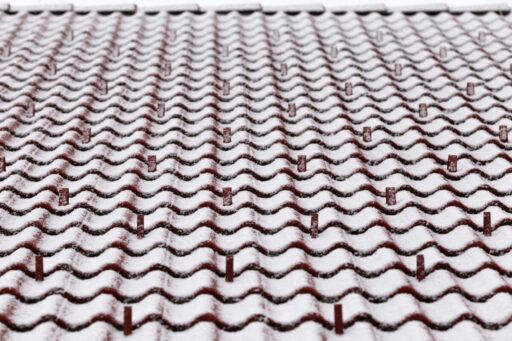
Choosing the Right Snow Guard for Vancouver Homes
Selecting appropriate snow guards for your property requires careful consideration of local climate conditions, roof characteristics, and personal preferences. For Vancouver homeowners, several specific factors should guide your decision-making process. Vancouver experiences substantial annual snowfall, averaging 266 inches, creating significant challenges for metal roof owners. This considerable precipitation demands robust snow retention systems that can handle periodic heavy accumulations.
The city’s weather patterns often include freeze-thaw cycles that increase the likelihood of sudden snow releases. These temperature fluctuations create the perfect conditions for snow slides as thin layers of meltwater form between snow and metal surfaces. Consequently, Vancouver homes benefit from systems designed to manage variable conditions throughout winter.
Roof pitch and snow guard materials
The steepness of your roof directly impacts snow guard requirements. According to experts, roofs with pitches less than 22 degrees (5/12) generally don’t require extensive snow retention in moderate snowfall areas. Nonetheless, for Vancouver’s substantial snow volumes, even lower-pitched metal roofs often benefit from basic snow management.
Roofs with slopes exceeding 30 degrees (7/12) should definitely consider snow guards in moderate to high snow load regions. Meanwhile, very steep roofs approaching 45 degrees may require fence-style systems rather than individual guards. Your roof’s overall design, including valleys, dormers, and skylights, also affects snow guard selection and placement. These features can create snow collection points that require special attention.
Each snow guard material offers distinct advantages:
- Stainless steel provides exceptional strength and corrosion resistance with 30-35 year lifespan, ideal for heavy snow areas ($15-$50 per unit)
- Aluminum offers a balance of durability (20–25 years) and affordability ($10-$30 per unit)
- Polycarbonate presents the most economical option ($5-$15 per unit) with 10-15 year durability
For Vancouver’s substantial snowfall, steel and aluminum typically provide better long-term performance compared to plastic options.
Aesthetic and budget preferences
Beyond functionality, appearance matters for many homeowners. Colour-matched components or powder-coated finishes allow snow guards to blend seamlessly with your roof. Some systems even incorporate strips of your actual roofing material for perfect colour coordination.
Cost considerations include not only the price per unit but also installation complexity and long-term maintenance. Bar-style systems start around $6.75 per linear foot, while other options vary based on material and design. Ultimately, selecting snow guards involves balancing immediate budget constraints against long-term protection needs.
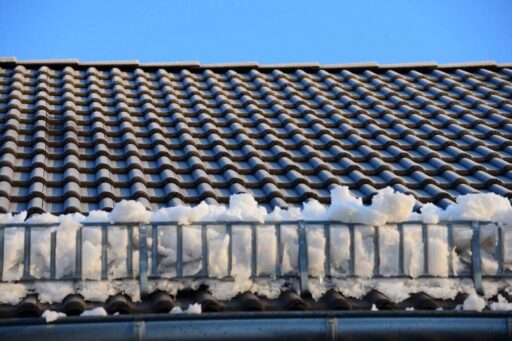
Installation and Maintenance: Best Practices
Proper installation and ongoing maintenance are crucial factors in maximizing the effectiveness of your snow guard system. Whether you’re considering a DIY approach or professional installation, understanding key best practices will ensure your snow retention system performs optimally through Vancouver’s winter seasons.
Professional vs. DIY installation
While determined DIYers can install simple pad-style guards, compelling reasons exist for hiring professionals. Expert installers understand the engineering behind snow loads and ensure your system is properly designed for your specific roof pitch and local climate conditions. Importantly, improper installation can void your roof warranty, as many metal roof manufacturers specifically require professional installation of accessories.
For homeowners comfortable with DIY projects, installation kits typically include everything needed plus step-by-step instructions. Although DIY installation costs less than hiring professionals, inexperience with heights poses significant safety risks. Always use proper safety equipment—including gloves, safety glasses, and fall protection—beforehand.
Placement and spacing guidelines
For optimal protection, position the first row of guards approximately 12–18 inches up from the eave. In some cases, depending on your roof design, this might vary from 6 to 24 inches. Always install guards across the entire roof width—not just above doors or walkways—to prevent uneven snow loading.
Roof pitch directly affects proper spacing—steeper roofs require more snow guards and closer spacing. For example, roofs with 1/12 to 2/12 pitch typically need rows every 15 feet, whereas 7/12 to 12/12 pitches require rows every 5 feet. Furthermore, staggered patterns create a more effective net to catch sliding snow rather than perfectly aligned rows.
Seasonal inspection and upkeep tips
Snow guards properly installed typically require minimal maintenance. Nevertheless, experts recommend these key practices:
- Conduct annual spring inspections to check for loose, bent, or damaged guards
- Examine any adhesive-mounted guards carefully, as temperature extremes can affect adhesion over time
- For clamp-to-seam systems, verify proper torque on set screws (approximately 90 inch-pounds for some models)
- Inspect sealant around adhesive-mounted guards and reapply if areas are no longer watertight
- Address any damage or necessary repairs promptly to maintain system integrity
For colour-matched systems, keep small amounts of touch-up paint available. Even high-quality finishes may need touch-ups after years of sun exposure.
How Snow Guards Protect Your Investment
Beyond preventing immediate property damage, snow guards provide long-term value. Without them, metal roof repairs can cost homeowners anywhere from $2,000 to $8,500. Snow guards help extend roof lifespan by evenly distributing the weight of accumulated snow across the structure.
These systems protect more than just the roof — they also safeguard gutters, landscaping, windows, and other vulnerable parts of a property. In addition, they reduce liability risks from injuries or damage caused by falling snow. Snow guards require very little upkeep, with maintenance costs typically under $100 per year, while potentially boosting property resale value in snowy regions.
Summary
Snow guards for metal roofs are an essential safety investment for Vancouver homeowners. The slick surface of metal makes sudden snow slides likely, putting gutters, landscaping, vehicles, and pedestrians at risk. System choice depends on roof pitch, snowfall, and budget—whether bar-style, pad-style, or fence-style. Materials range from affordable polycarbonate to durable stainless steel. Professional installation preserves warranties and ensures proper placement, while maintenance rarely requires more than a quick annual inspection.
